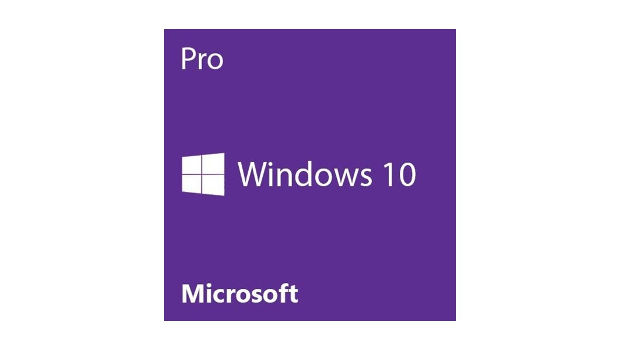Microsoft last week reshaped its portfolio of Windows 10 subscriptions for enterprises, but deferred discussing what, if any, price increases it will levy before 1 October.
Along with announcements that it will raise prices on perpetual licenses of Office 2019 and Windows Server 2019, and the associated CALs (client access licenses), Microsoft also revamped its Windows 10 Enterprise subscription offerings.
Changes to Windows 10 Enterprise were spelled out in some detail, even though new pricing was not disclosed. “For Windows, we’re taking steps to recalibrate the price and rename the per device/per user offers, optimising on our strategy of Microsoft 365,” Microsoft wrote in an FAQ.
“Part of this is about clarity,” said Wes Miller, an analyst with Directions on Microsoft, talking about licensing. But he also said the changes, both in pricing and nomenclature, are further efforts by Microsoft to move customers to the licensing model where rights are tied to users, not to devices. Server-based desktops, for example, are only possible under Microsoft’s per-user licensing, Miller pointed out.
Windows 10 Enterprise E3 and Windows 10 Enterprise E5 debuted in 2016, when Microsoft began selling subscriptions to the operating system, specifically Windows 10 Enterprise, the operating system’s top-tier version. Unlike Microsoft’s legacy licensing – in which the operating system is licensed on a per-device basis – the E3 and E5 subscriptions are per-user. A licensed user could work at any of five allowed devices equipped with Windows 10 Enterprise. (Microsoft first experimented with per-user enterprise licensing in 2014.)
Currently, Windows 10 E3 costs $84 per user per year ($7 per user per month), while E5 runs $168 per user per year ($14 per user per month). The difference between E3 and E5? The latter includes Windows Defender ATP (Advanced Threat Protection), an enterprise-grade cyber-threat detection and response service.
Microsoft also applied the same E3 and E5 labels to non-subscription SKUs (stock-keeping units), using them as nameplates for the traditional path to Windows 10 Enterprise: an upgrade from (usually) Windows 10 Pro and then a multi-year Software Assurance annuity paid in full or in installments.
Starting 1 October – the beginning of the year’s fourth quarter – Microsoft will drop one Windows 10 Enterprise offer and rename others.
On the it’ll-be-gone list: Windows 10 Enterprise E5 Per-Device. Microsoft will scratch that SKU from the price list.
Next, it will do away with the ‘Per-User’ and ‘Per-Device’ tags. What has been called Windows 10 Enterprise E3 Per-User will revert to its original name, ‘Windows 10 Enterprise E3’. Likewise, Windows 10 Enterprise E3 Per-Device will be simply ‘Windows 10 Enterprise’. And because of the demise of Windows 10 Enterprise E5 Per-Device, it’s likely – though Microsoft did not say so – that the Per-User SKU will return to its roots and be re-dubbed ‘Windows 10 Enterprise E5’.
The upshot is that only the subscription plans will carry the E3 or E5 designations.
On the pricing front, Microsoft was much less forthcoming than it had been about Office 2019 increases. “The price of Windows 10 Enterprise will be raised to match the price of Windows 10 Enterprise E3,” Microsoft said in the FAQ, meaning that there would be zero-dollar difference between a per-device and per-user license, even though the latter could be used on five PCs and the former on just one.
Elsewhere in the FAQ, Microsoft added: “Localised and channel specific prices will be available closer to launch,” referring to the 1 October effective date for the new prices.
By renaming the Windows 10 Enterprise subscriptions, Microsoft aligned their labels with those for Microsoft 365 Enterprise, the higher priced subscription that includes per-user licenses for Windows 10 Enterprise E3 or E5, Office 365 E3 or E5, and the Enterprise Mobility Suite + Security management tool bundle. Like Windows 10 Enterprise, Microsoft 365 Enterprise comes in E3 and E5 flavors, with the latter more expensive than the former.
Raising prices and doing away with a per-device version of Windows 10 Enterprise also plays into Microsoft’s strategy, which is, first, to push customers into subscriptions and second, to convince customers to adopt the most expensive subscriptions possible – those under the Microsoft 365 umbrella.
Miller noted that it’s now rare to hear Microsoft trumpet Windows 10 by itself, or Office 365 alone, when it markets to the enterprise. “There’s little just Windows 10 or just Office 365,” Miller said. “The option they’re leading with is Microsoft 365.”
While Windows 10 Enterprise E3 and E5 run $7 and $14 per user per month, respectively, partners sell Microsoft 365 Enterprise E3 for between $34 and $36, and E5 for between $61 and $65.
Arguing that Microsoft is making sure that the prices of a Microsoft 365 component – Windows 10 Enterprise – line up with the price of the aggregate, Miller also contended that the price increase for per-device rights to Windows 10 Enterprise is designed to motivate customers.
“The price increase is going to be hard for many customers [to stick with per-device licensing],” he said. Under the current pricing, the lower cost of per-device licensing was often a no-brainer. Now, the lack of a price differential will force customers to look again at per-user licensing, even if they’re “not interested in all the ‘user-fy’ bits,” Miller said.
IDG News Service







Subscribers 0
Fans 0
Followers 0
Followers